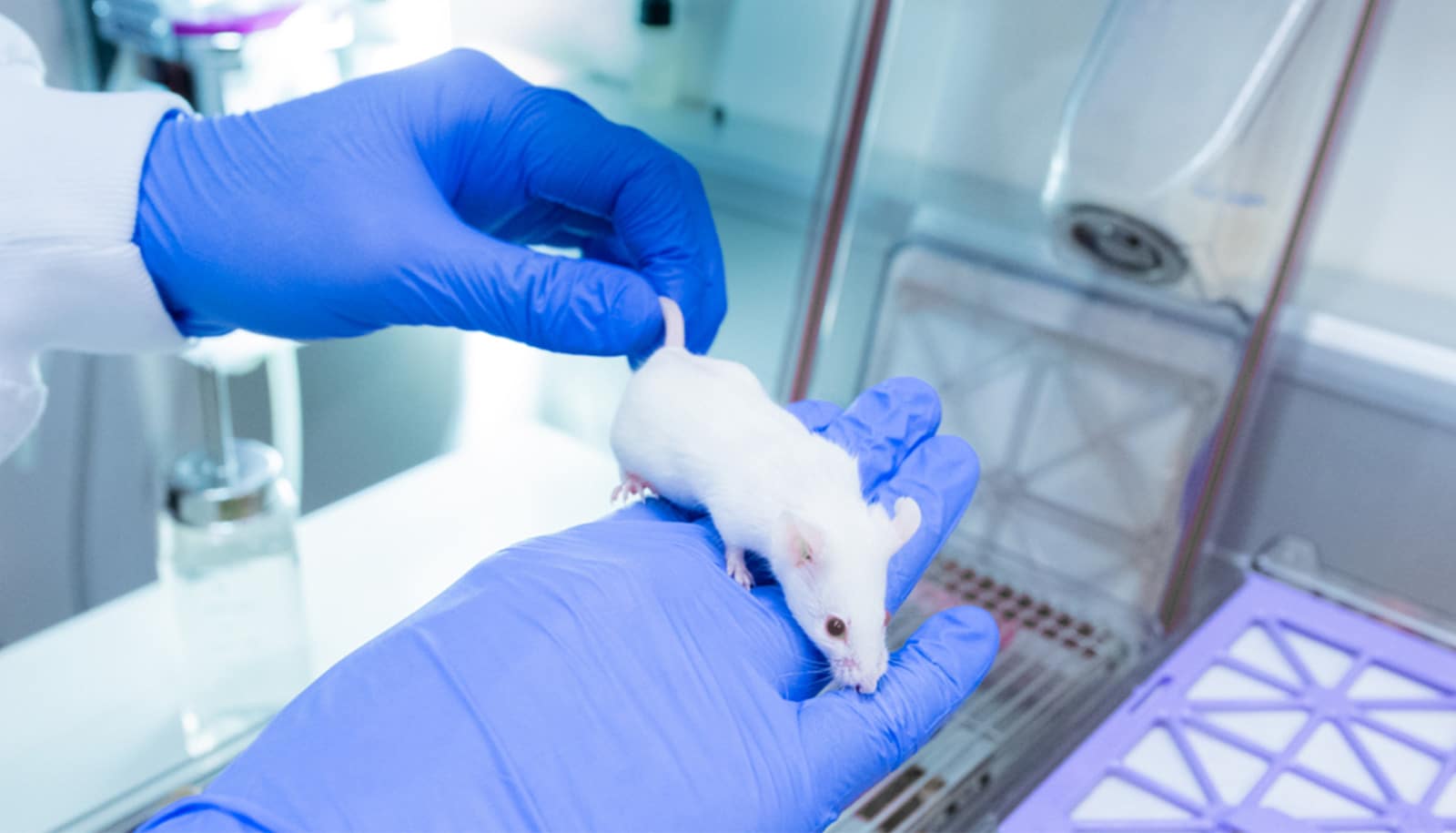Scientists have discovered the first genetic mutation that appears to protect against multiple aspects of biological aging in humans in an extended family of Old Order Amish living in the vicinity of Berne, Indiana.
An experimental “longevity” drug that recreates the effect of the mutation is now being tested in human trials to see if it provides protection against some aging-related illnesses.
“Not only do they live longer, they live healthier.”
Indiana Amish kindred (immediate family and relatives) with the mutation live more than 10 percent longer and have 10 percent longer telomeres (a protective cap at the end of our chromosomes that is a biological marker of aging) compared to Amish kindred members who don’t have the mutation, reports the study.
Amish with this mutation also have significantly less diabetes and lower fasting insulin levels. A composite measure that reflects vascular age also is lower—indicative of retained flexibility in blood vessels in the carriers of the mutation—than those who don’t have the mutation, the research also found.
The paper appears in the journal Science Advances.
These Amish individuals have very low levels of PAI-1 (plasminogen activator inhibitor,) a protein that comprises part of a “molecular fingerprint” related to aging or senescence of cells. It was previously known that PAI-1 was related to aging in animals but unclear how it affected aging in humans.
“The findings astonished us because of the consistency of the anti-aging benefits across multiple body systems,” says cardiologist Douglas Vaughan, the lead author of the paper and professor and chairman of medicine at Northwestern University Feinberg School of Medicine and Northwestern Medicine.
“For the first time we are seeing a molecular marker of aging (telomere length), a metabolic marker of aging (fasting insulin levels), and a cardiovascular marker of aging (blood pressure and blood vessel stiffness) all tracking in the same direction in that these individuals were generally protected from age-related changes,” Vaughan says.
“That played out in them having a longer lifespan. Not only do they live longer, they live healthier. It’s a desirable form of longevity. It’s their ‘health span.'”
Northwestern has partnered with Tohoku University in Japan in the development and testing of an oral drug, TM5614, that inhibits the action of PAI-1. The drug has already been tested in a phase 1 trial in Japan and is now in phase 2 trials there. Northwestern will apply for FDA approval to start an early phase trial in the US, possibly to begin within the next six months.
The proposed Northwestern trial will investigate the effects of the new drug on insulin sensitivity on individuals with type 2 diabetes and obesity because of the mutation’s effect on insulin levels in the Amish.
Benefits of the gene mutation
In the new study, Northwestern scientists looked at individuals who had one mutant copy of the gene, rendering their level of PAI-1 about half the level of kindred with two normal copies.
Those carriers of the gene mutation had nearly 30 percent lower fasting insulin levels and were completely protected from diabetes.
“We were definitely surprised,” Vaughan says. “Even when we analyze it factoring for their relatedness, the mutation is still an important predictor of whether they’ll get diabetes.”
“This is the only kindred on the planet that has this mutation.”
He says 7 percent of the kindred with two normal copies of the gene have diabetes, so out of the 177 Amish participants in the study, he would expect three or four of the carriers of the single mutant gene to have the disease as well.
The scientists also saw an improvement in a group of cardiovascular measures—lower blood pressure and more flexible blood vessels—that change with age. The improvement did not reach statistical significance, but the carriers of the mutant gene have a younger appearing cardiovascular system, Vaughan says. In particular, individuals in the oldest third of the group have a reduced pulse pressure, indicative of more flexible arteries.
Cognitive testing will be part of future measurements for the study. Experimental data in mice show lower levels of PAI-1 can protect against Alzheimer’s-like pathology.
“We hope to be able to revisit them regularly and do additional testing to look at the velocity of aging in this kindred and unearth more details about the protective effect of this mutation,” Vaughan says.
A ‘private mutation’
The Amish kindred in Berne, Indiana, have been genetically and culturally isolated and most are at least distantly related. The ancestors of the Indiana Amish emigrated in the middle of the 19th century from Berne, Switzerland. The town recalls the architecture of their original home in Switzerland with its Swiss-style clock tower and architecture.
Farmers from Switzerland who moved into the area introduced the mutation into the Amish kindred. Two of their descendants, who carried the mutation, married into the Amish community. The Amish community outside the Berne area does not carry this mutation.
“This is the only kindred on the planet that has this mutation,” Vaughan says. “It’s a ‘private mutation.'”
People with the mutation live to be 85 on average, significantly longer than their predicted average lifespan of 71 for Amish in general and which hasn’t changed much over the last century.
The age range of Amish in the study was 18 to 85 with the average age of carriers 44 and the unaffected 46 years old.
Intensive testing
On May 5, 2015, a caravan of 40 doctors, nurses, sonographers, and other health care workers drove to Berne before dawn and set up 10 testing stations in a nearby community center. Over the following two days, 177 Amish arrived by horse and buggy for testing, half on each day.
“They are curious about the mutation because they know some of them have a bleeding problem.”
It took an entire day for each person to go through all the testing stations that included: fasting blood samples, echocardiograms, systolic blood pressure testing, pulse wave velocity (a measure of stiffness of their large arteries), pulmonary function tests, and urine samples.
Scientists took fibroblasts (cells) and grew stem cells from those cells in order to investigate the impact of the mutation on cell biology. Scientists can turn those cells into neurons, cardiac cells, or any type of cell and investigate the impact of this genetic alteration on important biology.
Bleeding disorder
Why did so many of the kindred agree to participate in the study? “They are curious about the mutation because they know some of them have a bleeding problem,” Vaughan says.
Individuals affected with the bleeding disorder have two copies of the mutated gene that led to the absence of PAI-1 in the blood and the resulting bleeding. People who carry one copy of the mutated gene did not have a bleeding disorder.
PAI-1 has an important role in the regulation of the part of the human blood clotting system that helps to dissolve clots once formed. When people are missing PAI-1, they have increased breakdown of clots and abnormal bleeding that is associated with heavy menstrual bleeding, bleeding with pregnancy and ovulation, dental work, injury, and trauma.
Scientists found the individuals with two changed PAI-1 genes not only had a bleeding disorder but also had varying degrees of an unusual cardiac disorder that leads to fibrosis (scarring of the heart). One of the affected individuals has died from this complication.
House dust reveals how Amish kids avoid asthma
Shapiro and colleagues at the Indiana Hemophilia & Thrombosis Center treat 11 Amish patients with the double mutation. For bleeding issues, the patients receive a medication that can be taken by either mouth or given intravenously to prevent clots from being dissolved too quickly. There is no treatment for cardiac fibrosis recently identified by the research team.
PAI-1 as drug target
Northwestern is partnering with a Japanese startup company (Renascience) to develop a new class of drugs that specifically target PAI-1. The drugs are the brainchild of Vaughan’s collaborator, Dr. Toshio Miyata, who leads a drug discovery program at Tohoku University in northern Japan.
In the phase 1 Japanese studies, completed this past summer, the drug was given to about 160 healthy individuals to test its safety. After proving to be safe and nontoxic, the drug is now being tested in a phase 2 trial to see if inhibiting PAI-1 affects the migration of stem cells from the bone marrow.
These tests can’t really say how fast you’re aging
Scientists want to see if giving the PAI-1 inhibitor drug boosts the number of red and white blood cells and platelets of patients who have undergone chemotherapy, which results in low counts. That could reduce complications, which include infections, bleeding, and anemia. Since PAI-1 controls the mobilization and release of stem cells from the bone marrow, scientists hypothesize that partial inhibition of PAI-1 will accelerate the recovery of normal cell counts in the blood.
Vaughn’s previous research in a 2014 paper published in the Proceedings of the National Academy of Sciences showed the drug prolonged the lifespan in a mouse model of accelerated aging.
In that study, the rapidly aging mice fed the experimental drug lived more than three times longer than a control group, and their lungs and vascular system were protected from aging-like pathology, including emphysema and arteriosclerosis.
When cells or tissue age, they lose the ability to regenerate, and they secrete certain proteins, like a distinctive fingerprint. One of those proteins is PAI-1.
“We made the intellectual leap between a marker of senescence and physiological aging,” Vaughan says. “We asked is this marker for cell aging one of the drivers or mechanisms of rapid physiological aging?”
Vaughan first became interested in PAI-1 because it is the natural inhibitor of the body’s clot dissolving system. It specifically inhibits the clot-dissolving protein called t-PA, which was developed to treat people having heart attacks and strokes.
An earlier formulation of the experimental drug, TM5441, is one of only several chosen each year by the National Institute on Aging to be tested in its Interventions Testing Program, which investigates treatments with the potential to extend lifespan and delay disease in mice.
The National Heart, Lung and Blood Institute of the National Institutes of Health supported the work.
Source: Northwestern University



